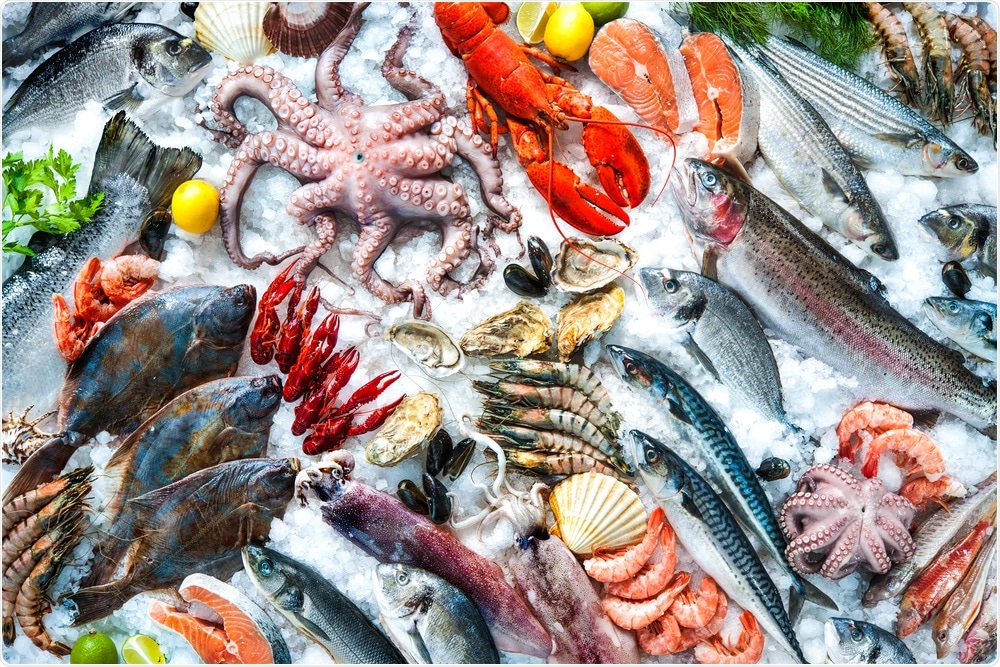A study of five different seafoods has found traces of plastic in every sample tested.

Image Credit: Alexander Raths/Shutterstock.com
Researchers bought oysters, prawns, squid, crabs and sardines from a market in Australia and analysed them using a newly developed method that identifies and measures five different plastic types simultaneously.
The study - by the University of Exeter and the University of Queensland - found plastic levels of 0.04 milligrams (mg) per gram of tissue in squid, 0.07mg in prawns, 0.1mg in oysters, 0.3mg in crabs and 2.9mg in sardines.
"Considering an average serving, a seafood eater could be exposed to approximately 0.7mg of plastic when ingesting an average serving of oysters or squid, and up to 30mg of plastic when eating sardines, respectively," said lead author Francisca Ribeiro, a QUEX Institute PhD student.
"For comparison, 30mg is the average weight of a grain of rice.
"Our findings show that the amount of plastics present varies greatly among species, and differs between individuals of the same species.
"From the seafood species tested, sardines had the highest plastic content, which was a surprising result."
Co-author Professor Tamara Galloway, of Exeter's Global Systems Institute, said: "We do not fully understand the risks to human health of ingesting plastic, but this new method will make it easier for us to find out."
The researchers bought raw seafood - five wild blue crabs, ten oysters, ten farmed tiger prawns, ten wild squid and ten wild sardines.
They then analysed them for the five different kinds of plastics that can be identified by the new method.
All of the plastics are commonly used in plastic packaging and synthetic textiles and are frequently found in marine litter: polystyrene, polyethylene, polyvinyl chloride, polypropylene and poly(methyl methacrylate).
In the new method, edible tissues are treated with chemicals to dissolve the plastics present in the samples. The resulting solution is analysed using a highly sensitive technique called Pyrolysis Gas Chromatography Mass Spectrometry which can identify the different kinds of plastic in the sample at the same time.
Polyvinyl chloride was found in all samples, while the plastic found in highest concentrations was polyethylene.
Microplastics are very small pieces of plastic that pollute much of the planet, including the sea where they are eaten by marine creatures of all types, from small larvae and planktonic organisms to large mammals.
Studies to date show that microplastics not only enter our diet from seafood, but also from bottled water, sea salt, beer and honey, as well the dust that settles on our meals.
The new testing method is a step towards defining what microplastic levels can be considered harmful and assessing the possible risks of ingesting microplastics in food.
The paper, published in the journal Environmental Science & Technology, is entitled: "Quantitative Analysis of Selected Plastics in High-Commercial-Value Australian Seafood by Pyrolysis Gas Chromatography Mass Spectrometry."